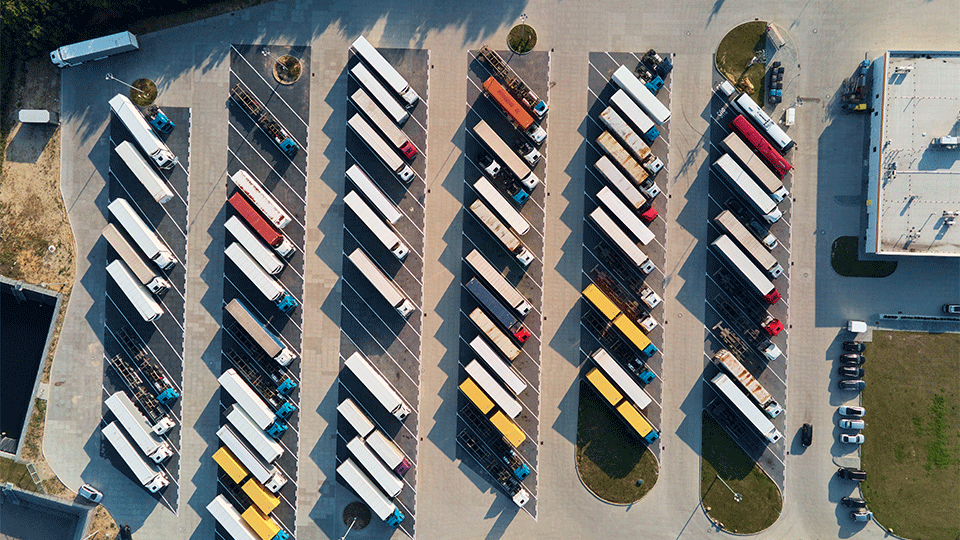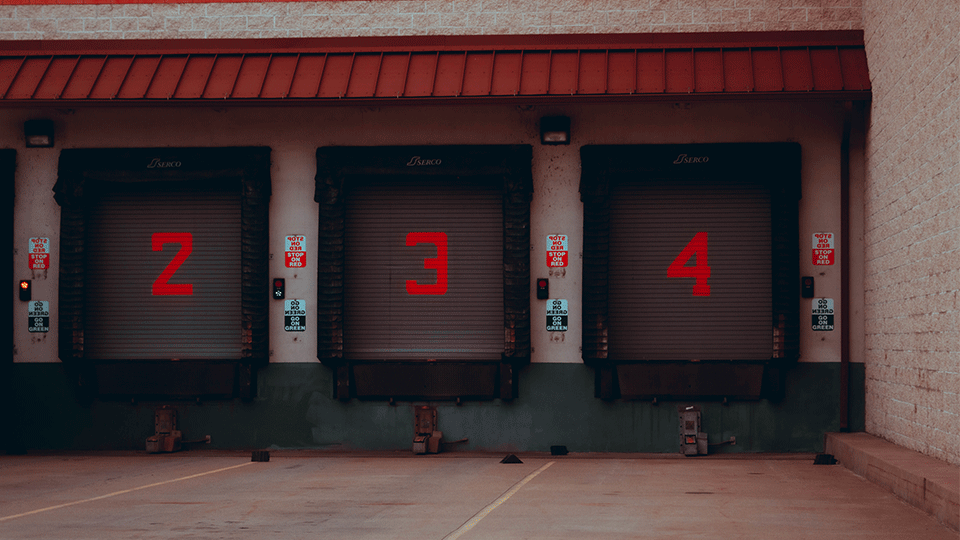Trade shows offer companies the opportunity to showcase their products and services to their market of focus alongside similar businesses with related offerings.
In this way, a company’s representatives can connect meaningfully with prospective consumers, introducing their capabilities, points of differentiation and the value of working with them.
While exhibiting at a trade show can be a significant investment, with floor/booth slots (in some instances) costing thousands of dollars, this expenditure can pay off tenfold should revenue opportunities surface during and/or following your exhibit.
Building relationships of trust with customers is the goal of every organization — these kinds of partnerships create repeat business and mutual success. Trade shows present an avenue for kickstarting these relationships.
As an industry-leading transportation company founded in 1955, here at Anderson Trucking Service (ATS), we’ve participated in many conferences, trade shows and expositions over the years. We’ve also helped hundreds of companies, just like yours, get their cargo to and from trade shows on time — an achievement that’s more challenging than you might think.
You see, without the proper planning, communication, processes and partnerships, it’s not uncommon for a company’s trade show shipments to go awry. This is the last thing you need; you have a lot riding on your company’s cargo arriving at its trade show on time.
In this article, we’ll break down four keys to getting a full truckload of trade show freight where it needs to go when it needs to get there. For new trade show shippers, like you, we’ve also included an overview of what’s truly unique about managing this process.
What is Unique About Shipping to a Trade Show?
Shipping freight to a trade show for exposition is different than your typical A to B freight transaction. In fact, you’ll want to be aware of several unique aspects of this process so you can plan accordingly.
The top three things to keep in mind when shipping freight to a trade show are:
- Trade shows have specific loading/unloading appointment requirements
- Many trade shows use marshaling yards
- Scale tickets are often required at trade shows
1. Trade Shows Have Specific Loading/Unloading Appointment Requirements
Trade shows schedule shipments according to the way in which they plan to set up and tear down each booth/venue. For this reason, every shipper sending cargo to these events must adhere to — and strive to meet — very rigid delivery appointment times (the same is true on the pickup side).
There is little lenience extended to companies that miss their time slot. When a missed appointment happens, truck drivers are forced to wait for a “work-in appointment” where they’ll be loaded as time allows at the discretion of trade show staff. In turn, this delay may create detention and/or layover charges for you to pay.
2. Many Trade Shows Use Marshaling Yards
Efficiency is the name of the game for trade show organizers. To achieve this end, most expositions utilize marshaling yards. Marshaling yards, typically located within a few miles of trade show grounds, are where inbound semi trucks are congregated until their appointment time arrives. In turn, these yards help trade show personnel maintain order, as trucks check in prior to their appointment time and are unloaded in sequential order.
 It’s important to keep this in mind when communicating with your transportation company. Since the driver moving your cargo will likely be required to check into a marshaling yard, this address — together with the tradeshow location — must be shared with them.
It’s important to keep this in mind when communicating with your transportation company. Since the driver moving your cargo will likely be required to check into a marshaling yard, this address — together with the tradeshow location — must be shared with them.
3. Scale Tickets Are Often Required at Trade Shows
Finally, some tradeshows bill their customers (you) by the pound. To collect this information, trade show personnel require drivers to submit scale tickets reflecting the weight of their semi-truck when empty and another when it’s loaded. Both of these scale tickets must be passed along to trade show officials so they can calculate your invoice.
Make sure your transportation provider is aware of this requirement. While a good carrier understands trade show requirements, not all of them require scale tickets. If your trade show contact expresses this necessity, make sure your transportation provider is aware. They can then communicate this to your driver so nobody is caught off guard.
Related: 15 Great Supply Chain and Logistics Conferences to Attend in 2023
4 Keys to Successful Trade Show Shipping
Strict appointment times, marshaling yards and scale tickets are critical to consider when planning for a trade show shipment. Keeping them in mind will help you ensure the on-time fulfillment of these freight moves.
That said, like anything new, it’s best to study up before tackling these loads for the first time. Here are four keys to successful trade show shipping:
- Plan ahead and communicate
- Choose the right logistics provider
- Expedite your loading processes
- Understand trade show regulations
1. Plan Ahead and Communicate
With so many moving pieces (and people to communicate with) the sooner you start planning for your trade show shipments, the better. This will give you more time to coordinate with all stakeholders and make any necessary arrangements with your carrier.
In the chaotic transportation industry, executing your pickup/delivery date(s) usually comes down to the solidity of your plan. This pattern rings true for tradeshows too, work with your trade show point of contact and transportation provider to ensure everyone is on the same page from the beginning.
Pro tip: To promote an open line of communication, make sure everyone involved has everyone else’s contact information.
2. Choose the Right Logistics Provider
Selecting a suitable transportation provider is crucial to the success of your trade show shipments. Look for a company with experience in trade show logistics and a good track record of on-time delivery and customer service.
During your vetting processes, lean in and ask the right questions including:
- “What is your familiarity with shipping to ____ trade show?”
- “How many of your drivers are comfortable navigating trade show logistics?”
- “Do you have regular capacity along my lane?”
- “What is your track record for on-time delivery?”
A transportation provider’s response to these questions reflects its ability to service your freight adequately. And, since trade shows won’t wait for a late truck to arrive, only work with the most reliable companies.
Vet Your Providers the Right Way: Download the Freight Carrier Selection Checklist
3. Expedite your Loading Processes
Expeditiously loading and unloading trucks is important, regardless of your destination or timelines. Helping truck drivers keep moving and maximizing their hours of service pays dividends for shippers; drivers like to return to efficient facilities. Fast loading also helps you avoid accessorial fees like detention and layover — levied due to prolonged loading/unloading.
 When shipping to a tradeshow, the importance of fast loading can’t be overstated. The last thing you need is to miss an unloading appointment because a driver didn’t get loaded quickly enough at your facility.
When shipping to a tradeshow, the importance of fast loading can’t be overstated. The last thing you need is to miss an unloading appointment because a driver didn’t get loaded quickly enough at your facility.
Here are some common ways to expedite these processes:
- Bring on part-time help to assist with loading for a period
- Hire another full-time associate to help load trailers
- Develop a system for product staging so that when a driver shows up zero time is wasted
- Consider utilizing a drop trailer — to be loaded as time allows
4. Understand Trade Show Regulations
Each trade show has its own rules and regulations regarding shipments, so it's essential to familiarize yourself with these before you start shipping. This may include restrictions on the size and weight of shipments, as well as deadlines for delivery and pickup.
Marshaling yards and empty/loaded scale tickets are examples of common trade show regulations. That said, every show is unique, making it imperative that you do your research and ask the right questions in planning.
Become a More Efficient Shipper Regardless of Your Destination!
Look, as long as you open up lines of communication with every party involved in your trade show freight move, ensure an efficient loading process when your truck arrives and select a competent carrier, shipping to a trade show won’t be difficult.
Doing these things will help your freight meet its appointment time and with the correct documentation in hand. That said, if you have any questions, contact us here.
Shipping freight is a process most businesses continuously refine. Does your business do the same?
Since you’re here to learn more about a process you’re unfamiliar with, we’re guessing you value optimization. This is good. Luckily, there are plenty of ways to improve a transportation supply chain. Unfortunately, many companies aren’t even aware their supply chains could use some tweaks.
To help you optimize for the future, your next step is simple: check out these five tips for gaining efficiencies in a transportation supply chain and see if any would make sense for you. Even though we’ve already covered one here (expediting your loading/unloading times), the other four are even more important. Don’t let an unhealthy supply chain stunt your journey toward becoming the supplier that always delivers for its customers. Those efficiency tips are your best route forward.




